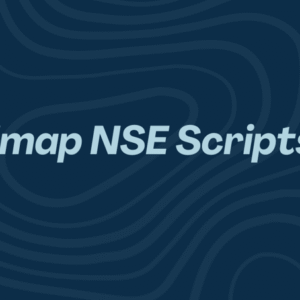
Web application security is more important than ever, with data breaches and cyberattacks becoming increasingly common. The OWASP Top 10 is a globally recognized list of the most critical security risks facing modern web applications. Published by the Open Web Application Security Project (OWASP), this list serves as a key reference for developers, testers, and security professionals.
In this article, we’ll break down each of the OWASP 2021 Top 10 vulnerabilities, explain how they work, and provide tips on how to prevent them in your applications.
What Is the OWASP Top 10?
The OWASP Top 10 is a curated list of the ten most significant web application security risks. Updated periodically based on industry feedback, real-world attack data, and community input, it is widely used as a security benchmark across industries.
1. Broken Access Control
Broken access control occurs when users can access data or perform actions outside their intended permissions. This can lead to unauthorized access to user accounts, admin panels, or sensitive records.
Examples:
- Accessing other users’ profiles by modifying a URL (e.g.,
/user?id=111) - Elevating privileges to admin without proper validation
Prevention:
- Enforce role-based access controls
- Never trust client-side access restrictions
- Regularly test access control policies
2. Cryptographic Failures
Formerly known as Sensitive Data Exposure, this risk involves the improper handling of encryption or sensitive data. This can expose user passwords, credit card info, or personal data.
Examples:
- Using outdated or broken encryption algorithms
- Transmitting data over HTTP instead of HTTPS
Prevention:
- Use strong, modern encryption (e.g., AES-256)
- Store passwords using secure hashing (e.g., bcrypt)
- Enforce HTTPS across the application
3. Injection
Injection flaws, such as SQL Injection, occur when untrusted input is sent to an interpreter. Attackers can execute unauthorized commands or access data.
Examples:
- SQL Injection
- Command Injection
- LDAP Injection
Prevention:
- Use parameterized queries or prepared statements
- Validate and sanitize all user inputs
4. Insecure Design
Insecure design refers to flaws in application architecture or logic that make it inherently vulnerable. It focuses on design weaknesses rather than implementation bugs.
Examples:
- Lack of secure design patterns
- Missing threat modeling in development phases
Prevention:
- Implement threat modeling and security architecture reviews
- Use secure design principles and frameworks
- Perform code and architecture reviews early
5. Security Misconfiguration
This vulnerability results from improper configuration of security settings. It’s one of the most common issues in modern applications.
Examples:
- Default admin accounts left active
- Error messages exposing stack traces
- Open cloud storage buckets
Prevention:
- Use automated configuration scanners
- Disable unnecessary services
- Review and harden server configurations
6. Vulnerable and Outdated Components
Using components with known vulnerabilities puts your app at risk. Attackers often exploit outdated software to gain access.
Examples:
- Using an outdated jQuery or WordPress plugin
- Not patching a known Apache vulnerability
Prevention:
- Track all components and their versions
- Regularly update and patch dependencies
7. Identification and Authentication Failures
Weaknesses in authentication systems allow attackers to compromise credentials, impersonate users, or bypass authentication entirely.
Examples:
- Brute-force attacks due to lack of rate limiting
- Using predictable session tokens
- Session fixation or poor session timeout handling
Prevention:
- Use Secure Session Management Practices
- Use secure password storage and recovery methods
- Limit failed login attempts and monitor suspicious activity
8. Software and Data Integrity Failures
This risk arises when applications don’t properly validate the integrity of code or data. This is especially relevant in CI/CD pipelines and software updates.
Examples:
- Downloading libraries without signature validation
- Using untrusted plugins or scripts
Prevention:
- Use signed updates and libraries
- Validate all third-party code
- Implement code integrity checks
9. Security Logging and Monitoring Failures
Without proper logging and monitoring, attacks can go unnoticed. This limits your ability to detect breaches, investigate incidents, and respond in time.
Examples:
- Lack of login/logout tracking
- No alerts on suspicious behavior
Prevention:
- Implement centralized logging and alerting
- Monitor authentication and access logs
- Conduct regular log reviews and audits
10. Server-Side Request Forgery (SSRF)
SSRF flaws allow attackers to make the server initiate unauthorized requests. This can be used to access internal resources, bypass firewalls, or scan networks.
Examples:
- A file fetch feature that lets users input URLs
- Connecting to internal services using local IP addresses
Prevention:
- Validate and sanitize user input URLs
- Use allowlists for outbound requests
Conclusion
The OWASP Top 10 is essential for any developer, security analyst, or system administrator involved in web development. By understanding and addressing these common vulnerabilities, you reduce your application’s attack surface, protect sensitive data, and build more secure software.
Security isn’t a one-time task—it’s a continuous commitment. Following the OWASP Top 10 can help you establish a strong foundation for building secure, reliable web applications.









